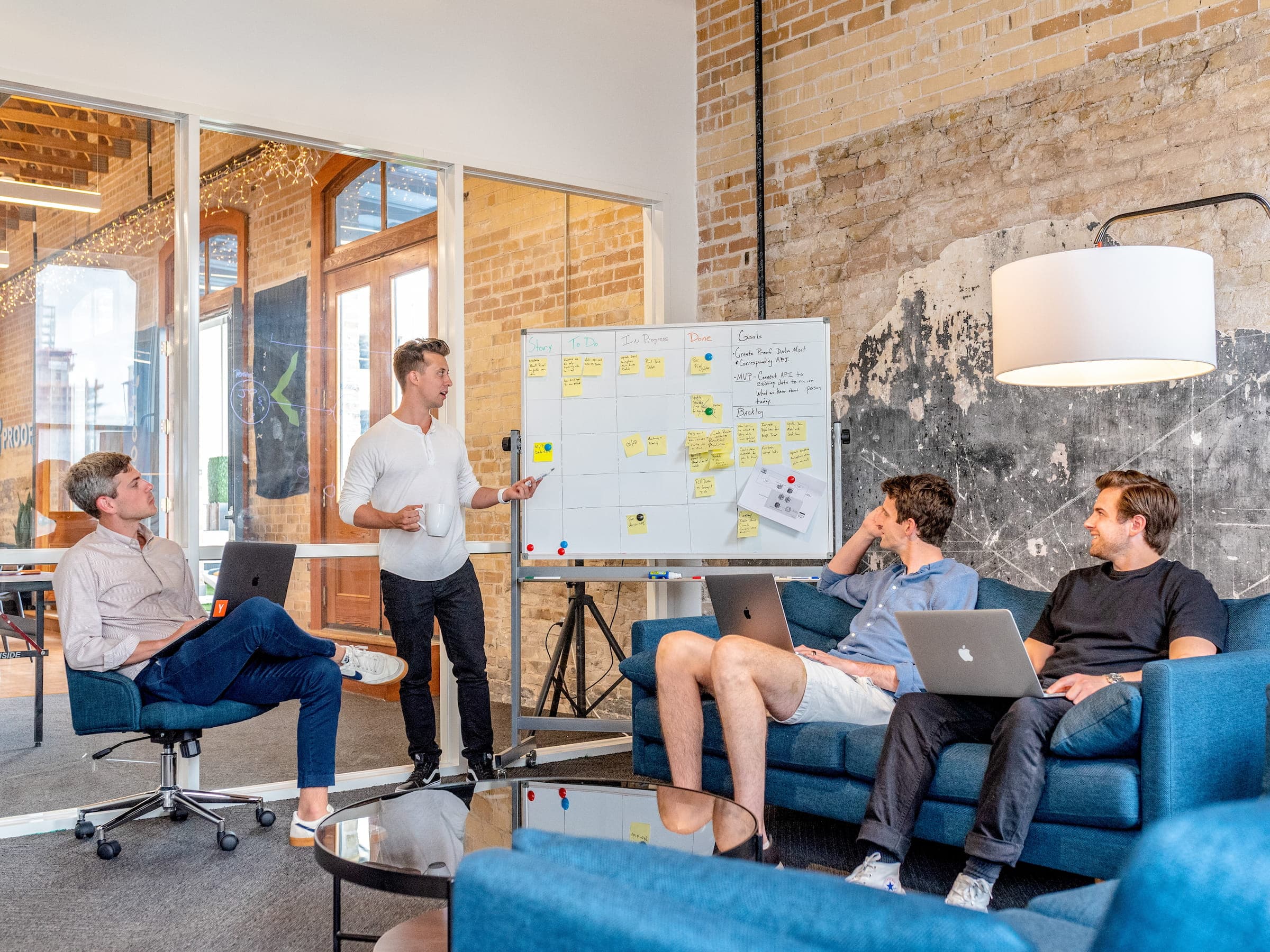Traction Lab - Startups are hard AF,
but they’re not complicated.
We run rapid design sprints to discover interesting opportunities, define critical hypotheses, and test them with real customers — in days, not months.

Discover
Every sprint begins the same way: ideation, inspiration, empathy. Deeply understand the customer, their problems, their context, and opportunities to make rapid forward progress.
Our team of innovation and entrepreneurship facilitators bust out our bag of tricks to understand and document the context of the problem we’re trying to solve together. We leverage personas, experience maps, process flows, the myriad canvases, and a variety of experiment designs to ensure we’re starting with a well-defined and compelling opportunity.
We never leave the Discover phase without proof that we’re solving a problem worth solving — a severe and urgent need in a large and growing market.
How we help:
- Market oppportunity discovery
- Cohort program design & delivery
- Landing page testing
- Value proposition design
- Traction bootcamp
- Educational email course design

Define
Synthesise what we learn, define the problems to address, and identify the right opportunity. Picking where to make your play is often the hardest question.
Testing anything is meaningless without a clear hypothesis. That’s why we spend time homing in on what we want to learn — and from whom — before moving on. It’s at the core of the build-measure-learn loop: theorise, analyse, and synthesise.
It’s not wise to take a walk in the woods without knowing which direction you need to go — nor without the tools to tell you if you’re on the right path.
Without the team from The Right Box, our product wouldn’t even exist. Or, at least, it wouldn’t be any good.
How we help:
- Product and MVP design
- Cohort program design
- Business model design
- Value proposition design
- Traction bootcamp
- Educational email course design

Test
Ideas are worthless until you get them out of your head and see what they can do. Every sprint ends with a well-defined experiment to run with real customers, right away.
There are dozens of ways to test hypotheses — customer interviews, rapid prototypes, MVPs, competitive analogs, feature tests, and more. The hard part is rarely asking the question. It’s figuring out what to ask.
A successful sprint ends with a clear go/no-go — pivot or persevere. Every experiment stress-tests an hypothesis to be shown as ambiguously true or false.
How we help:
- Growth hacking
- Design sprints
- Traciton testing
- Cohort program design
- Rapid prototyping
Our manifesto - Before trying to do it right, find the right it to try.
Einstein said with an hour to solve a problem his life depended on, he’d spend 55 minutes figuring out the right question, because then answering it would be easy.
- Focus on immediate impact. Many actions can have an impact in the future, but few have an impact right now. By default, do those. The future is built on the present.
- Separate fact from conjecture. We only know what we can prove, and the work of a startup is to prove what we haven’t. The first step? Know which is which.
- Be biased toward action. Don’t get stuck in your head, where it’s safe. Testing a half-baked idea beats trying to think it to completion. Momentum wins.
- Proportion effort to the evidence. Take big swings and expect to sometimes miss. Fail fast and fail cheaply — but never fail epicly. Never bet more than the evidence warrants.
- Maintain a model. Never act in order to “see what happens” — do it to prove what WILL happen because you’re right. Know your True North, stress-test it, and incessantly revise.
- Always be testing. Startups are defined by questions, and the answers are in the market. If whatever you’re doing isn’t yielding data from the customers, you’re wasting your time.
Ready to get to work?
Get in touch
- Careers
jobs@rightbox.coPress Inquiries
press@rightbox.co - The Right Box
901 H Street
Suite 120, PMB 42
Sacramento, CA 95814